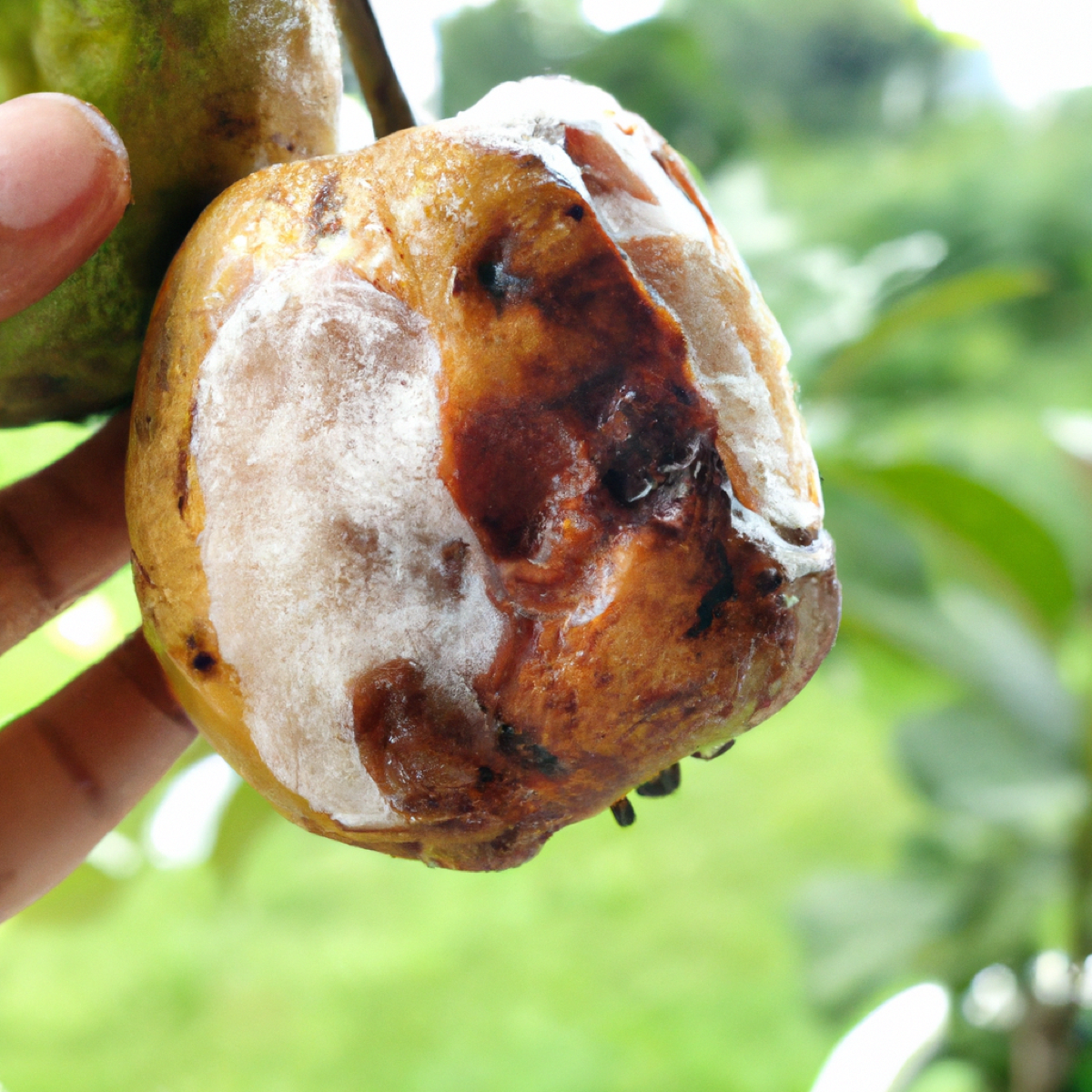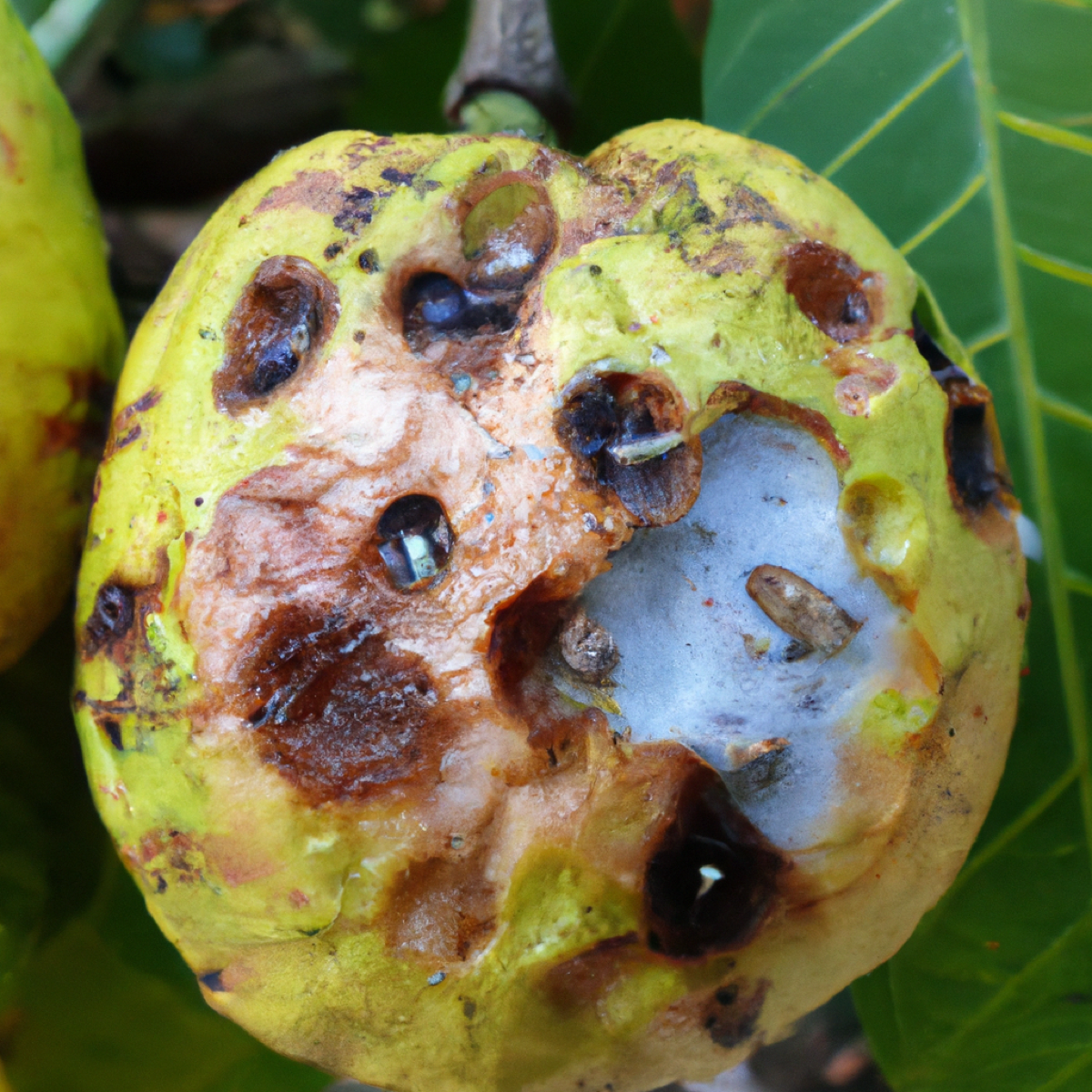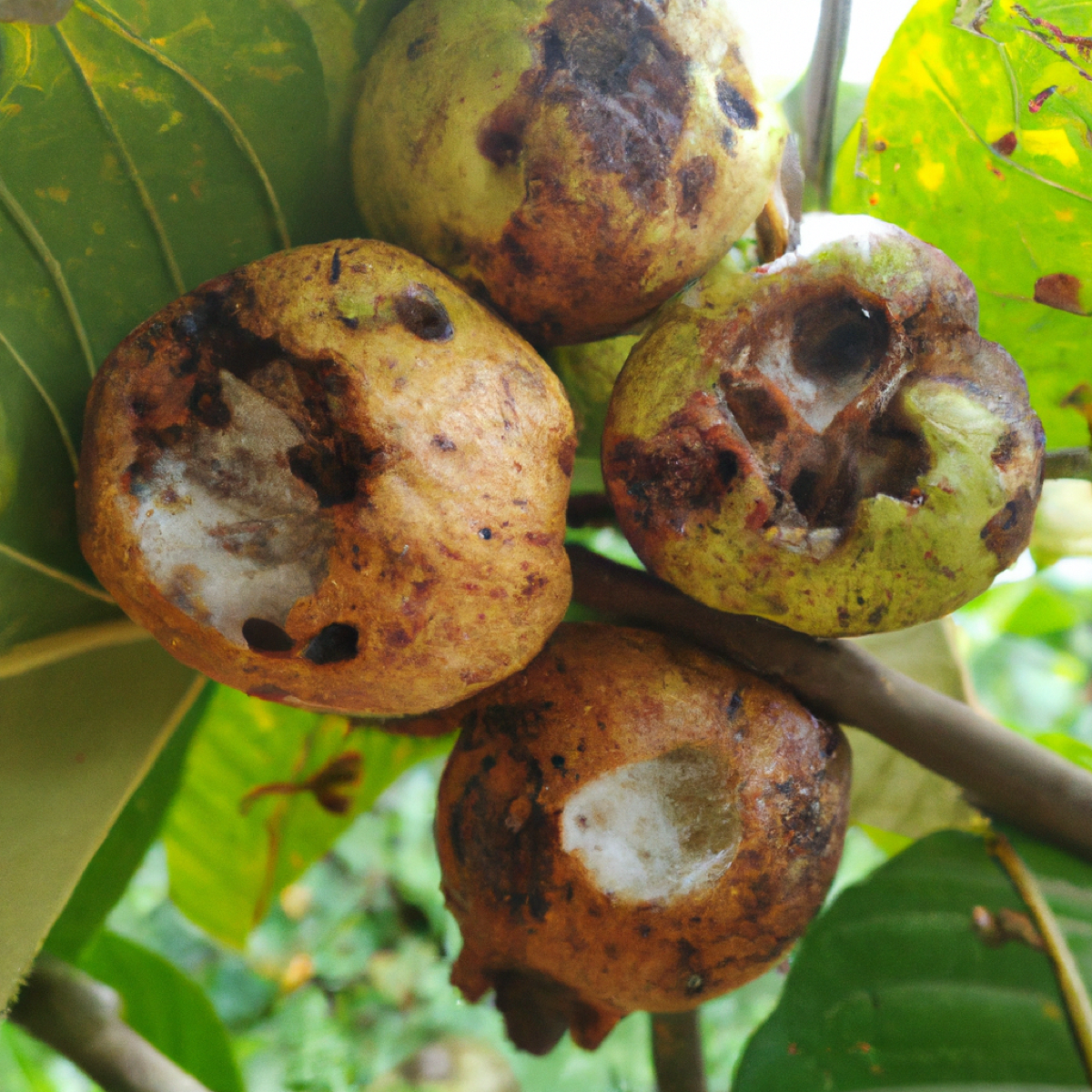Fruit Rot Disease is a major concern for guava growers as it can cause significant yield losses and reduce the quality of the fruit. The disease is caused by several fungal pathogens and can spread rapidly in favorable environmental conditions. Growers can employ chemical, biological, and cultural control strategies to manage the disease.

Fruit Rot Disease Management in Guava
The Causal Organism of Fruit Rot Disease
The causal organism of Fruit Rot Disease in guava is a group of soil-borne fungi belonging to the genus Phytophthora. Specifically, Phytophthora parasitica and Phytophthora nicotianae var. parasitica are responsible for causing the disease, with Phytophthora parasitica being homothallic and capable of producing oospores in a single culture.
The Disease Cycle of Fruit Rot Disease
- Inoculation: The disease cycle begins with introducing the pathogen, which can occur through the spores produced on the surface of diseased tissues. These spores are most commonly produced when the temperature is around 25°C.
- Infection: Once the pathogen has been introduced to the fruit, it infects the plant tissue and grows. This results in the development of the white cottony growth characteristic of the disease.
- Sporulation: As the pathogen grows and develops, it produces many sporangia and spores on the surface of the diseased tissues. These spores serve as an important source of inoculum for developing epidemics.
- Spread: Rain splashes from infected plant material or soil can spread the pathogen’s spores. This is particularly likely during rainy weather or when there is a strong wind.
- Secondary infection: As the spores are dispersed, they can land on other fruits or plants, leading to secondary infections and the further spread of the disease.
- Re-inoculation: As the disease progresses, more and more spores are produced, leading to a greater likelihood of re-inoculation and the continued spread of the disease.
Causes/Conditions Favorable for Fruit Rot Disease Spread in the Field.
- Cool, wet environmental conditions: Fruit Rot Disease thrives in cool, wet environments with high soil moisture. These conditions provide an ideal environment for the growth and spread of the pathogen.
- High humidity: High humidity is favorable for developing Fruit Rot Disease, as it creates an ideal environment for the pathogen to grow and reproduce.
- High temperature: Temperature between 28-32°C (25°C) is favorable for initiating Fruit Rot Disease. This temperature range provides optimal conditions for the pathogen to infect and spread throughout the fruit.
- Close plantation: Close plantation can increase the humidity and reduce air circulation, creating an environment favorable for spreading Fruit Rot Disease.
In case you missed it: Algal Leaf Spot Disease Management in Guava: Symptoms, Treatment, Cultural, Chemical Control

Symptoms of Fruit Rot Disease
- White cottony growth: The affected fruit area is covered with a whitish growth that develops rapidly during humid weather.
- Rapid development: The pathogen can cover almost the entire fruit surface within 3-4 days during humid weather.
- High humidity: Fruits located near the soil level and covered with dense foliage are more severely affected by the disease, especially under high relative humidity.
- Softening of the fruit: The skin of the fruit below the cottony growth becomes a little soft and turns from light brown to dark.
- Fallen fruits: Fruits that have fallen to the ground are particularly vulnerable to the disease and are often badly affected.
Fruit Rot Disease Management in Guava by Cultural method
- Tillage practices: Tillage should be avoided during the monsoon season and afterward till December, as it can increase the incidence of the disease.
- Proper tree maintenance: Timely and adequate manuring, intercultural, and irrigation can help to maintain proper tree vigor and enable them to withstand infection.
- Sanitation: Good sanitation practices in the orchard can also help prevent the disease’s spread. This includes removing infected plant material from the field, avoiding planting in areas with a history of Fruit Rot Disease, and properly disposing of infected plant material.
Fruit Rot Disease Management in Guava by Biological method
- Trichoderma: Trichoderma is a fungus that can be used as a biological control agent for Fruit Rot Disease. Products such as Alderm, Sanjeevni, Treat Bio-Fungicide, and Multiplex Nisarga can be applied at 2-3 ml/l or 20 g/l to control the disease.
- Pseudomonas: Pseudomonas is a type of bacteria that can be used to control the spread of Fruit Rot Disease. Bio-Jodi, Bactvipe, Ecomonas, Spot, and Almonas can be applied at 20 g/l or 1-3 ml/l to control the disease.
- Glomus: Glomus is a fungus that can be used as a biological control agent for Fruit Rot Disease. Mycozoots can be applied at a rate of 0.5 gm/l to control the disease.
Fruit Rot Disease Management in Guava by Chemical method
- Chemical management of Fruit Rot Disease in guava involves using various fungicides. Bordeaux mixture (2:2:50) and copper oxychloride (0.2%)
- Other fungicides like Dithane Z-78 (0.2%) and Aureofungin (10 mg/ml) have been found to control the disease.
Preventive Measures for Control of Fruit Rot Disease
- Avoid dense plantations to prevent the development of humid environments that favor the disease.
- Support branches hanging down near the ground to reduce the risk of infection from contact with soil.
- Use chemical control methods such as spraying 0.2% Zineb or ten ppm auriofungin, but ensure to follow recommended dosages and safety precautions.
- Use Copper oxychloride with caution as it can be toxic for guava fruit.
- Practice good sanitation by removing infected plant material from the field, avoiding planting in areas with a history of Fruit Rot Disease, and properly disposing of infected plant material.
In case you missed it: Mango Nut Weevil Pest Management: Symptoms, Treatment, Chemical, Biological, Natural, and Organic Control

Conclusion
Effective management of Fruit Rot Disease in guava requires a multi-faceted approach that combines cultural, biological, and chemical control methods. By implementing good agricultural practices such as proper sanitation, avoiding dense plantations, and maintaining tree vigor, growers can reduce the risk of infection and minimize yield losses. In addition, biological and chemical control methods can help control the spread of the disease in the field. A holistic approach to disease management is essential to ensure a healthy and productive guava crop.
- Beneficial Insects in Pest Management
- Natural Solutions for Pest Control in Flower Gardens
- Types of Fungicides Used in Agriculture
- Common Issues in the Fruit Development Stage of Pomegranate Farming
- Fruit Development Issues in Papaya: Easy Solutions and Treatment
- Soil-Borne Diseases and How to Protect Your Plants
- Practices to Prevent Disease Spread in the Garden
- From Wilted to Thriving: How to Treat Root Rot Naturally in Houseplants
- Natural Remedies to Cure Brown Spots on Fig Tree Leaves